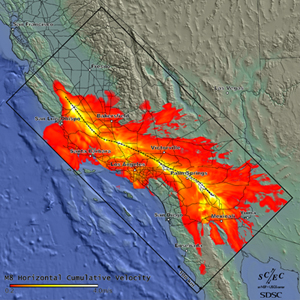Difference between revisions of "Main Page"
(→Most Recent News) |
(→Most Recent News) |
||
| Line 59: | Line 59: | ||
* '''[https://www.olcf.ornl.gov/2013/12/16/titan-simulates-earthquake-physics-necessary-for-safer-building-design/ Titan Simulates Earthquake Physics Necessary for Safer Bulding Design]''' - On OLCF Titan, the SCEC team was able to run simulations of a 7.2-magnitude earthquake up to 10 hertz, which can beter inform performance-based building design. The entire simulation totaled 443 billion grid points. OLCF News, Dec 16, 2013. | * '''[https://www.olcf.ornl.gov/2013/12/16/titan-simulates-earthquake-physics-necessary-for-safer-building-design/ Titan Simulates Earthquake Physics Necessary for Safer Bulding Design]''' - On OLCF Titan, the SCEC team was able to run simulations of a 7.2-magnitude earthquake up to 10 hertz, which can beter inform performance-based building design. The entire simulation totaled 443 billion grid points. OLCF News, Dec 16, 2013. | ||
| − | |||
| − | |||
|} | |} | ||
</div></div><div id="footer">[[Image:spacer.gif]]</div></div> | </div></div><div id="footer">[[Image:spacer.gif]]</div></div> | ||
Revision as of 14:26, 10 March 2016
Home The High Performance GeoComputing Lab (HPGeoC) at San Diego Supercomputer Center, University of California at San Diego, is conducting research and development in high performance computing, data intensive computing, and grid computing to support geoscience applications, with particular emphasis on computational seismology. HPGeoC is in collaboration with Southern California Earthquake Center (SCEC) and other academic, industrial, and national lab partners to develop state-of-the-art techniques and applications supporting petascale earthquake computing.
Most Recent News



|